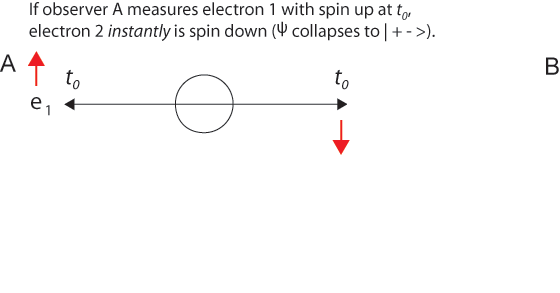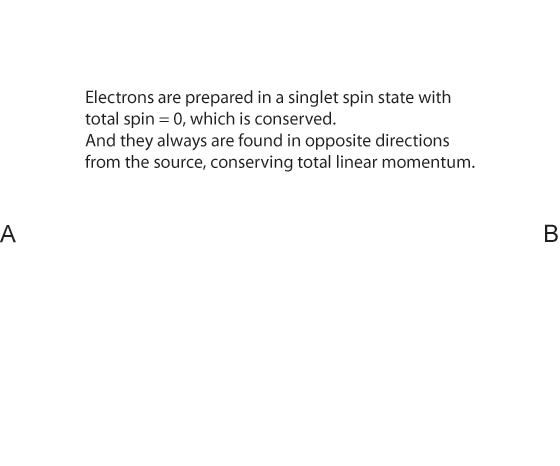|
Philosophers
Mortimer Adler Rogers Albritton Alexander of Aphrodisias Samuel Alexander William Alston Anaximander G.E.M.Anscombe Anselm Louise Antony Thomas Aquinas Aristotle David Armstrong Harald Atmanspacher Robert Audi Augustine J.L.Austin A.J.Ayer Alexander Bain Mark Balaguer Jeffrey Barrett William Barrett William Belsham Henri Bergson George Berkeley Isaiah Berlin Richard J. Bernstein Bernard Berofsky Robert Bishop Max Black Susanne Bobzien Emil du Bois-Reymond Hilary Bok Laurence BonJour George Boole Émile Boutroux Daniel Boyd F.H.Bradley C.D.Broad Michael Burke Jeremy Butterfield Lawrence Cahoone C.A.Campbell Joseph Keim Campbell Rudolf Carnap Carneades Nancy Cartwright Gregg Caruso Ernst Cassirer David Chalmers Roderick Chisholm Chrysippus Cicero Tom Clark Randolph Clarke Samuel Clarke Anthony Collins Antonella Corradini Diodorus Cronus Jonathan Dancy Donald Davidson Mario De Caro Democritus Daniel Dennett Jacques Derrida René Descartes Richard Double Fred Dretske John Earman Laura Waddell Ekstrom Epictetus Epicurus Austin Farrer Herbert Feigl Arthur Fine John Martin Fischer Frederic Fitch Owen Flanagan Luciano Floridi Philippa Foot Alfred Fouilleé Harry Frankfurt Richard L. Franklin Bas van Fraassen Michael Frede Gottlob Frege Peter Geach Edmund Gettier Carl Ginet Alvin Goldman Gorgias Nicholas St. John Green H.Paul Grice Ian Hacking Ishtiyaque Haji Stuart Hampshire W.F.R.Hardie Sam Harris William Hasker R.M.Hare Georg W.F. Hegel Martin Heidegger Heraclitus R.E.Hobart Thomas Hobbes David Hodgson Shadsworth Hodgson Baron d'Holbach Ted Honderich Pamela Huby David Hume Ferenc Huoranszki Frank Jackson William James Lord Kames Robert Kane Immanuel Kant Tomis Kapitan Walter Kaufmann Jaegwon Kim William King Hilary Kornblith Christine Korsgaard Saul Kripke Thomas Kuhn Andrea Lavazza James Ladyman Christoph Lehner Keith Lehrer Gottfried Leibniz Jules Lequyer Leucippus Michael Levin Joseph Levine George Henry Lewes C.I.Lewis David Lewis Peter Lipton C. Lloyd Morgan John Locke Michael Lockwood Arthur O. Lovejoy E. Jonathan Lowe John R. Lucas Lucretius Alasdair MacIntyre Ruth Barcan Marcus Tim Maudlin James Martineau Nicholas Maxwell Storrs McCall Hugh McCann Colin McGinn Michael McKenna Brian McLaughlin John McTaggart Paul E. Meehl Uwe Meixner Alfred Mele Trenton Merricks John Stuart Mill Dickinson Miller G.E.Moore Thomas Nagel Otto Neurath Friedrich Nietzsche John Norton P.H.Nowell-Smith Robert Nozick William of Ockham Timothy O'Connor Parmenides David F. Pears Charles Sanders Peirce Derk Pereboom Steven Pinker U.T.Place Plato Karl Popper Porphyry Huw Price H.A.Prichard Protagoras Hilary Putnam Willard van Orman Quine Frank Ramsey Ayn Rand Michael Rea Thomas Reid Charles Renouvier Nicholas Rescher C.W.Rietdijk Richard Rorty Josiah Royce Bertrand Russell Paul Russell Gilbert Ryle Jean-Paul Sartre Kenneth Sayre T.M.Scanlon Moritz Schlick John Duns Scotus Arthur Schopenhauer John Searle Wilfrid Sellars David Shiang Alan Sidelle Ted Sider Henry Sidgwick Walter Sinnott-Armstrong Peter Slezak J.J.C.Smart Saul Smilansky Michael Smith Baruch Spinoza L. Susan Stebbing Isabelle Stengers George F. Stout Galen Strawson Peter Strawson Eleonore Stump Francisco Suárez Richard Taylor Kevin Timpe Mark Twain Peter Unger Peter van Inwagen Manuel Vargas John Venn Kadri Vihvelin Voltaire G.H. von Wright David Foster Wallace R. Jay Wallace W.G.Ward Ted Warfield Roy Weatherford C.F. von Weizsäcker William Whewell Alfred North Whitehead David Widerker David Wiggins Bernard Williams Timothy Williamson Ludwig Wittgenstein Susan Wolf Scientists David Albert Michael Arbib Walter Baade Bernard Baars Jeffrey Bada Leslie Ballentine Marcello Barbieri Gregory Bateson Horace Barlow John S. Bell Mara Beller Charles Bennett Ludwig von Bertalanffy Susan Blackmore Margaret Boden David Bohm Niels Bohr Ludwig Boltzmann Emile Borel Max Born Satyendra Nath Bose Walther Bothe Jean Bricmont Hans Briegel Leon Brillouin Stephen Brush Henry Thomas Buckle S. H. Burbury Melvin Calvin Donald Campbell Sadi Carnot Anthony Cashmore Eric Chaisson Gregory Chaitin Jean-Pierre Changeux Rudolf Clausius Arthur Holly Compton John Conway Simon Conway-Morris Jerry Coyne John Cramer Francis Crick E. P. Culverwell Antonio Damasio Olivier Darrigol Charles Darwin Richard Dawkins Terrence Deacon Lüder Deecke Richard Dedekind Louis de Broglie Stanislas Dehaene Max Delbrück Abraham de Moivre Bernard d'Espagnat Paul Dirac Hans Driesch John Dupré John Eccles Arthur Stanley Eddington Gerald Edelman Paul Ehrenfest Manfred Eigen Albert Einstein George F. R. Ellis Hugh Everett, III Franz Exner Richard Feynman R. A. Fisher David Foster Joseph Fourier Philipp Frank Steven Frautschi Edward Fredkin Augustin-Jean Fresnel Benjamin Gal-Or Howard Gardner Lila Gatlin Michael Gazzaniga Nicholas Georgescu-Roegen GianCarlo Ghirardi J. Willard Gibbs James J. Gibson Nicolas Gisin Paul Glimcher Thomas Gold A. O. Gomes Brian Goodwin Joshua Greene Dirk ter Haar Jacques Hadamard Mark Hadley Patrick Haggard J. B. S. Haldane Stuart Hameroff Augustin Hamon Sam Harris Ralph Hartley Hyman Hartman Jeff Hawkins John-Dylan Haynes Donald Hebb Martin Heisenberg Werner Heisenberg Grete Hermann John Herschel Basil Hiley Art Hobson Jesper Hoffmeyer Don Howard John H. Jackson William Stanley Jevons Roman Jakobson E. T. Jaynes Pascual Jordan Eric Kandel Ruth E. Kastner Stuart Kauffman Martin J. Klein William R. Klemm Christof Koch Simon Kochen Hans Kornhuber Stephen Kosslyn Daniel Koshland Ladislav Kovàč Leopold Kronecker Rolf Landauer Alfred Landé Pierre-Simon Laplace Karl Lashley David Layzer Joseph LeDoux Gerald Lettvin Gilbert Lewis Benjamin Libet David Lindley Seth Lloyd Werner Loewenstein Hendrik Lorentz Josef Loschmidt Alfred Lotka Ernst Mach Donald MacKay Henry Margenau Owen Maroney David Marr Humberto Maturana James Clerk Maxwell Ernst Mayr John McCarthy Warren McCulloch N. David Mermin George Miller Stanley Miller Ulrich Mohrhoff Jacques Monod Vernon Mountcastle Emmy Noether Donald Norman Travis Norsen Alexander Oparin Abraham Pais Howard Pattee Wolfgang Pauli Massimo Pauri Wilder Penfield Roger Penrose Steven Pinker Colin Pittendrigh Walter Pitts Max Planck Susan Pockett Henri Poincaré Daniel Pollen Ilya Prigogine Hans Primas Zenon Pylyshyn Henry Quastler Adolphe Quételet Pasco Rakic Nicolas Rashevsky Lord Rayleigh Frederick Reif Jürgen Renn Giacomo Rizzolati A.A. Roback Emil Roduner Juan Roederer Jerome Rothstein David Ruelle David Rumelhart Robert Sapolsky Tilman Sauer Ferdinand de Saussure Jürgen Schmidhuber Erwin Schrödinger Aaron Schurger Sebastian Seung Thomas Sebeok Franco Selleri Claude Shannon Charles Sherrington Abner Shimony Herbert Simon Dean Keith Simonton Edmund Sinnott B. F. Skinner Lee Smolin Ray Solomonoff Roger Sperry John Stachel Henry Stapp Tom Stonier Antoine Suarez Leo Szilard Max Tegmark Teilhard de Chardin Libb Thims William Thomson (Kelvin) Richard Tolman Giulio Tononi Peter Tse Alan Turing C. S. Unnikrishnan Nico van Kampen Francisco Varela Vlatko Vedral Vladimir Vernadsky Mikhail Volkenstein Heinz von Foerster Richard von Mises John von Neumann Jakob von Uexküll C. H. Waddington James D. Watson John B. Watson Daniel Wegner Steven Weinberg Paul A. Weiss Herman Weyl John Wheeler Jeffrey Wicken Wilhelm Wien Norbert Wiener Eugene Wigner E. O. Wilson Günther Witzany Stephen Wolfram H. Dieter Zeh Semir Zeki Ernst Zermelo Wojciech Zurek Konrad Zuse Fritz Zwicky Presentations Biosemiotics Free Will Mental Causation James Symposium |
The False Asymmetry in Entanglement
In 1935 Albert Einstein and Erwin Schrödinger mistakenly introduced an asymmetry into a perfectly symmetric situation, making entanglement the mystery that it is considered today. Every follower of their early thinking introduces this false asymmetry.
Almost every presentation of the EPR paradox begins with something like "Alice observes one particle..." and concludes with the question "How does the second particle get the information needed so that Bob's later measurements correlate perfectly with Alice's?"
In between the two experimenters, two entangled particles leave the center in opposite directions. Alice makes a measurement and finds an electron or photon in a certain spin state (say up). When Bob makes his measurement, at the same time or later, he always finds a spin state (say down) that is perfectly correlated (or anti-correlated) with Alice's. The final spin is the same as at the start of the experiment (say zero). Spin is a conserved quantity.
The simplest explanation of the mystery of entanglement is that any measurement, either Alice or Bob, whichever is actually first, "collapses" the two-particle wave function and determines both particles' properties. Conservation of those properties means that they have been continuously correlated perfectly since the experiment started, unless an external interaction changes one or both of them.
It is a surprise that Einstein, who was so good at seeing deep symmetries, did not consider how to remove the false asymmetry favoring the supposed "first" measurement..
 This description privileges the "here" and the "now" of Alice's point of view. In the special frame of reference in which Alice's and Bob's labs are at rest along with the central source emitting the entangled particles, the two-particle wave function Ψ12 "collapses" in both places at the same instant in "world-time." Either Alice or Bob "collapses" the wave function, depending on who measures first in this special frame. We can say that like the initial entanglement, disentanglement affects both particles simultaneously.
This description privileges the "here" and the "now" of Alice's point of view. In the special frame of reference in which Alice's and Bob's labs are at rest along with the central source emitting the entangled particles, the two-particle wave function Ψ12 "collapses" in both places at the same instant in "world-time." Either Alice or Bob "collapses" the wave function, depending on who measures first in this special frame. We can say that like the initial entanglement, disentanglement affects both particles simultaneously.
 Bob's "then" and "there" are thought by Alice to happen later because they are in a space-like separation and it takes time for Bob's results to reach Alice. But the overall situation is perfectly symmetric. Bob can think his measurement is first when it is not, unless it is actually made at a later time t1 in the special frame above.
Einstein's 1935 EPR paper asked about two electrons fired in opposite directions from a central source with equal velocities. He imagined them starting at t0 some distance apart and approaching one another with high velocities. Then for a short time interval from t1 to t1 + Δt the particles are in contact with one another and become entangled.
Bob's "then" and "there" are thought by Alice to happen later because they are in a space-like separation and it takes time for Bob's results to reach Alice. But the overall situation is perfectly symmetric. Bob can think his measurement is first when it is not, unless it is actually made at a later time t1 in the special frame above.
Einstein's 1935 EPR paper asked about two electrons fired in opposite directions from a central source with equal velocities. He imagined them starting at t0 some distance apart and approaching one another with high velocities. Then for a short time interval from t1 to t1 + Δt the particles are in contact with one another and become entangled.
 Einstein said correctly in the EPR paper that at a later time t2, a measurement of one electron's position would instantly establish the position of the other electron - without measuring it explicitly. And this is correct, just as after the collision of two billiard balls, measurement of one ball tells us exactly where the other one is due to conservation of momentum. But this is not "action at a distance." It is more properly "knowledge at a distance."
Note that Einstein used conservation of linear momentum to calculate the position of the second electron. Although conservation laws are rarely cited as the explanation, they are the physical reason that entangled particles always produce correlated results. If the results were not always correlated, the implied violation of a fundamental conservation law would be a much bigger story than the mysterious entanglement itself, as interesting as that is.
Now linear momentum is not the only quantity that is always strictly conserved. Others are mass, energy, angular momentum, and particle spin. It is the spin (of electrons or photons) that is measured in the modern tests of entanglement inspired by Bell's 1964 theorem and inequality.
Einstein said correctly in the EPR paper that at a later time t2, a measurement of one electron's position would instantly establish the position of the other electron - without measuring it explicitly. And this is correct, just as after the collision of two billiard balls, measurement of one ball tells us exactly where the other one is due to conservation of momentum. But this is not "action at a distance." It is more properly "knowledge at a distance."
Note that Einstein used conservation of linear momentum to calculate the position of the second electron. Although conservation laws are rarely cited as the explanation, they are the physical reason that entangled particles always produce correlated results. If the results were not always correlated, the implied violation of a fundamental conservation law would be a much bigger story than the mysterious entanglement itself, as interesting as that is.
Now linear momentum is not the only quantity that is always strictly conserved. Others are mass, energy, angular momentum, and particle spin. It is the spin (of electrons or photons) that is measured in the modern tests of entanglement inspired by Bell's 1964 theorem and inequality.
 Now Einstein's idea of an "objective reality" is that the particles have properties like position, momentum, and spin at all times. By contrast, Niels Bohr's "Copenhagen Interpretation" claims that particles have no such properties until they are measured.
While it is true that particles acquire some specific properties that depend on what the experimenter measures for, conservation laws require that particle motions and other properties are continuous in space and time. It is only our knowledge of the particle positions that appears to be discontinuous (the "quantum jumps").
But just because we cannot know their properties does not mean, as Einstein insisted, that they do not have objective properties. We cannot prove (without continuous measurements) that the particle ceases to exist or has discontinuous properties, between measurements. What forces would cause such changes? We imagine the particles are not interacting with other particles!
One property that is particularly difficult to visualize as conserved is spin. When measured in a particular direction, electrons always are measured as having a spin of +1/2 or -1/2. They can be measured in the x, y, or z direction, so it is tempting to see them as having spin 1/2 simultaneously in these directions, but that is not the case. They have a certain probability of measuring 1/2 or -1/2 in any direction, but it is the measurement that "projects" the spin 1/2 into the direction of measurement.
Now Einstein's idea of an "objective reality" is that the particles have properties like position, momentum, and spin at all times. By contrast, Niels Bohr's "Copenhagen Interpretation" claims that particles have no such properties until they are measured.
While it is true that particles acquire some specific properties that depend on what the experimenter measures for, conservation laws require that particle motions and other properties are continuous in space and time. It is only our knowledge of the particle positions that appears to be discontinuous (the "quantum jumps").
But just because we cannot know their properties does not mean, as Einstein insisted, that they do not have objective properties. We cannot prove (without continuous measurements) that the particle ceases to exist or has discontinuous properties, between measurements. What forces would cause such changes? We imagine the particles are not interacting with other particles!
One property that is particularly difficult to visualize as conserved is spin. When measured in a particular direction, electrons always are measured as having a spin of +1/2 or -1/2. They can be measured in the x, y, or z direction, so it is tempting to see them as having spin 1/2 simultaneously in these directions, but that is not the case. They have a certain probability of measuring 1/2 or -1/2 in any direction, but it is the measurement that "projects" the spin 1/2 into the direction of measurement.
|
||||||||||||||||||||||||||||||||||||||||||||||||